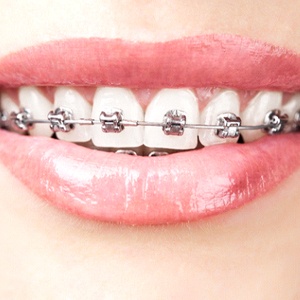Comprehensive Overview to Orthodontics Procedures for Fixing Oral Imbalances
In the realm of orthodontics, the trip to attaining a flawlessly lined up smile entails a myriad of procedures tailored to correct dental misalignments. From standard dental braces to undetectable aligners and also medical alternatives, the area of orthodontics supplies an array of solutions to address varying levels of dental irregularities. Recognizing the details of each treatment, including their devices, advantages, and prospective disadvantages, is vital in making educated decisions concerning one's orthodontic therapy. As we navigate with the extensive guide to orthodontic procedures for correcting oral imbalances, the detailed information of each technique will certainly unfold, shedding light on the path towards a practical and harmonious dental alignment.
Orthodontic Procedures Review

In enhancement to conventional dental braces and clear aligners, orthodontists might also suggest various other interventions like headgear, palatal expanders, or retainers to deal with certain alignment issues (cumming orthodontics). These treatments are customized per individual's one-of-a-kind needs and may include a mix of therapies to attain the wanted outcomes. Regular modifications and tracking are critical components of orthodontic treatment to make certain progress gets on track and to make any kind of essential alterations in the process. By undertaking orthodontic treatments, individuals can not only achieve a straighter smile yet additionally boost their general oral health and function.
Traditional Braces: Just How They Function
When taking into consideration orthodontic treatments for dental imbalances, conventional dental braces stand apart as a reliable technique for dealing with teeth positioning. Typical braces contain brackets, cables, and bands that interact to use continual pressure on the teeth, progressively moving them into the wanted alignment. The braces are affixed to the teeth utilizing an unique adhesive, and the cords are threaded via the braces. By readjusting the tension of the cables, orthodontists can manage the direction and force related to each tooth, assisting them into correct alignment gradually.
As pressure is used to the teeth through the braces, the bone surrounding the teeth is improved to sustain the new tooth positions. People will need regular modifications at the orthodontist's office to make sure the dental braces proceed to apply the correct stress for reliable teeth motion.
Unseen Aligners: Cons and pros
Invisible aligners provide a practical and discreet alternative to conventional braces for correcting oral misalignments. These clear, custom-made trays are virtually unnoticeable when put on, making them an attractive alternative for people seeking an extra visually pleasing orthodontic treatment. Among the key see here now advantages of unseen aligners is their removability, enabling less complicated upkeep of oral health compared to typical dental braces. Patients can get rid of the aligners before consuming or brushing their teeth, reducing the danger of food getting stuck in the appliance and streamlining the cleaning process.

Surgical Orthodontic Options
Surgical treatments in orthodontics existing feasible choices for dealing with complex dental imbalances that might not be successfully fixed with conventional orthodontic treatments. While unnoticeable aligners and traditional dental braces can remedy lots of orthodontic issues, particular instances need medical intervention to accomplish optimal outcomes. Surgical orthodontic options are generally recommended for extreme malocclusions, substantial jaw inconsistencies, and situations where the underlying bone structure needs modification to accomplish appropriate positioning.
One typical medical orthodontic treatment is orthognathic surgical procedure, which includes repositioning the jaws to correct functional issues such as problem speaking or eating. This surgical treatment is commonly done in cooperation with an orthodontist that helps line up the teeth prior to and after the procedure. Surgical orthodontics may additionally include treatments to expose influenced teeth, remove excess periodontal cells, or reshape the jawbone to produce an extra unified face profile.
Prior to thinking about medical orthodontic options, individuals undertake a detailed evaluation to figure out the need and potential benefits of such treatments. braces. While surgical treatment may seem daunting, it can substantially boost both the function and looks of the smile in instances where conventional orthodontic treatments fail
Retainers and Post-Treatment Treatment

Post-treatment care entails following the orthodontist's guidelines carefully. This might consist of appropriate dental health methods, participating in follow-up consultations, and putting on the retainers as suggested. Failing to adhere to post-treatment treatment directions can cause relapse, where why not try this out the teeth slowly return in the direction of their original placements. Consistent retainer wear, good dental hygiene, and regular dental examinations are important for keeping the results attained via orthodontic surgical procedure and guaranteeing the long-term security of the corrected oral alignment.
Verdict
In final thought, orthodontic procedures supply different alternatives for correcting oral imbalances. Surgical orthodontic options are readily available for more serious imbalances. Generally, orthodontic treatments can efficiently improve oral wellness and visual appearance.
As we navigate with the comprehensive guide to orthodontic procedures for remedying oral misalignments, the elaborate details of each method will certainly unfold, dropping light on the course towards a functional and harmonious oral placement. - cumming orthodontist
One of the most common orthodontic therapies is the use of dental braces, which consist of steel brackets and cords that apply mild stress to progressively change teeth right into the wanted position.When taking into consideration orthodontic therapies for dental imbalances, traditional braces stand out as a reliable method for fixing teeth placing. Furthermore, invisible aligners may not be appropriate for intricate orthodontic problems that need more significant teeth activity, as they are normally advised for mild to modest situations. Retainers are personalized orthodontic tools made to hold teeth in their dealt with placements after the conclusion of orthodontic treatment.